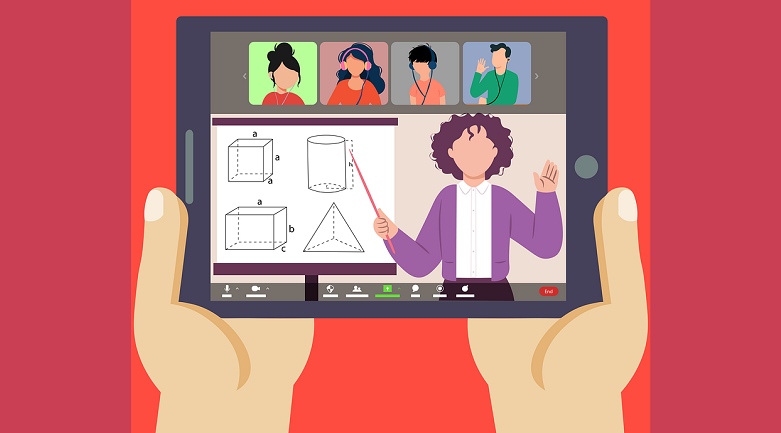JAKARTA, incaschool.sch.id – Learning Channels: Navigating the Digital Education Landscape. If you’d asked me a few years ago what learning channels were, I’d probably have shrugged and pointed at a pile of textbooks. But, man, how things have changed since digital learning swept into our lives! Let’s dive into this crazy world together and see how we can actually make it work for us. I’m gonna get real with you – sharing my missteps, wins, and go-to strategies so you don’t have to learn the tough way.
Digital Education, My Early Stumbles, and What Actually Works

I started dabbling in online learning way before it was cool – way before Zoom became a verb and Google Classroom was everyone’s new BFF. My first try? An insanely boring online course (yawn) that I signed up for just because it was “free.” I barely made it through two modules before quitting. Biggest lesson learned? Not all learning channels are created equal, and free doesn’t always mean valuable.
Fast forward to last year, I decided it was time to get serious. The pandemic hit, everyone migrated online, and suddenly Learning Channels: Navigating the Digital Education Landscape was no longer optional. The thing is, I made all the mistakes. Overloaded my schedule with four courses at once, didn’t pick the right platform for my learning style, didn’t check if they had Indonesian subtitles or peer forums (rookie mistake, I know!). If you relate, don’t worry—I got some hacks for you.
Picking the Right Learning Channels: It’s Not One-Size-Fits-All
Here’s my first tip: Learning isn’t just about videos. There are platforms for every type of learner. Udemy’s got practical courses, Coursera gives you serious “university vibes,” and Ruangguru is awesome for Indonesian students who want localized content. But my holy grail? YouTube channels with micro-lessons. Sometimes you don’t need a full course—just a quick explainer on tricky math concepts or how to write an essay introduction.
One important insight: Don’t chase the trend or popular stuff just because everyone’s doing it. Look at the content format. Are you a visual learner who needs graphics and animation? Or do you crave live discussions and peer feedback? I found out I’m more of a discussion junkie—I get bored just watching slides. That’s when I shifted to platforms with interactive elements, like Quipper and Zoom study groups.
My Best Tips for Acing Digital Learning (and What NOT To Do!)
1. Organize, but Don’t Over-Organize
You ever seen those crazy “study aesthetic” accounts on Insta? Don’t fall for it! I tried making perfect digital notes, but ended up wasting time on colors and fonts instead of actual studying. Nowadays, I keep it simple: Google Keep for quick notes, and Trello boards to track my progress. If you prefer analog stuff, that’s cool too—mix digital and physical tools for your own balance.
2. Curate Your Channels
Learning Channels: Navigating the Digital Education Landscape means you need to curate what actually motivates YOU. I make “learning playlists” on YouTube and subscribe only to channels with practical tips (like Crash Course, Sekolah Pintar, or any local creator with real talk). I once subscribed to over 25 channels—trust me, too much noise leads to zero focus.
3. Connect, Don’t Isolate
It’s way too easy to feel alone when you’re learning online. I’ve made this mistake by never joining discussion forums. But the moment I started asking dumb questions (that turned out to be not that dumb), my learning skyrocketed. Use Telegram groups, student communities, or even WhatsApp—make friends, swap notes, and share memes about deadlines (therapeutic!).
Common Pitfalls in Digital Learning (Trust Me, I’ve Been There!)
The Multitasking Trap
I thought watching lectures while scrolling Instagram was productive. Spoiler: It wasn’t. Multitasking murders your knowledge retention—especially when you’re “half-listening” to a teacher and half-watching TikTok. Now, I put my phone in another room. Try it for one week, and your test scores will thank you!
Assuming Everything Online is Accurate
One thing about Learning Channels: Navigating the Digital Education Landscape – not every resource online is legit. I once prepped for an exam using a “shortcut” video but bombed my quiz because the info was out of date (ouch). Always double-check if the creator is credible—look for recent uploads, real qualifications, or recommendations from your teachers or friends. If you hear “sumber: Wikipedia,” fact-check!
Too Many Notifications, Not Enough Focus
Group chats pop off, Zoom invitations keep coming, and suddenly your day’s gone. Turn off notifications during study sessions, or use focus timers like the Pomodoro technique. My favorite? 25 minutes of laser focus, then a snack break. Trust me, snacks help the brain function (scientifically proven, or at least, that’s what I tell myself!).
Data, Real Insights & What Indonesian Students Are Saying
According to a 2022 survey by Katadata, 82% of Indonesian students said they use multiple channels for learning online—not just one. Hybrid learning is here to stay, folks! My own friends mix it up: Some attend live Zoom courses after school, some prefer Telegram micro-learning, and some combine both with physical study groups at cafes like Kopi Kenangan. There’s no perfect formula, but experimenting (and failing forward) is totally normal.
If you’re a parent or teacher, don’t stress if students are juggling different apps or seem hooked to their screens. Ask them what’s working—and what’s not. I found my productivity went up 30% (thank you, Google Calendar stats!) after dumping two pointless “study apps” I kept out of FOMO.
Building Real Knowledge Beyond Just “Passing Exams”
This part hits home. After using learning channels just to cram for tests in the past, I realized: Passing exams is cool, but actually understanding stuff is way better. I now mix bite-sized lessons with deep dives—it’s the secret to long-term knowledge, not just short-term grade boosts.
Example? I use Duolingo for Bahasa Inggris every day for 10 minutes but join a weekly conversation group to actually practice. I’ve failed, stumbled, and sometimes forgot the right phrase—but that’s how real growth happens.
Final Thoughts – Just Start and Tweak As You Go!
So, Learning Channels: Navigating the Digital Education Landscape is all about finding what works for you (and admitting what just doesn’t). Don’t be afraid to drop a platform that’s wasting your time. Experiment, ask for help, and remember—everyone’s learning online these days, but YOUR path is unique.
Drop a comment if you’ve had a digital learning fail or found a killer resource I should know about. Let’s build this digital education adventure together. Good luck, and remember: Any progress counts, even if it’s messy!
Enhance Your Understanding: Access Our Expertise on Knowledge
Be Sure to Review Our Last Article on Wisdom Sharing!


